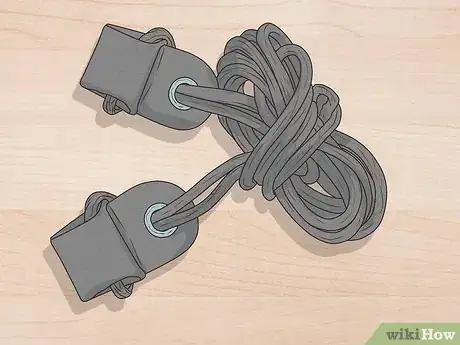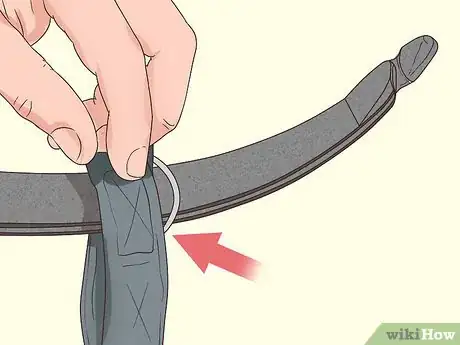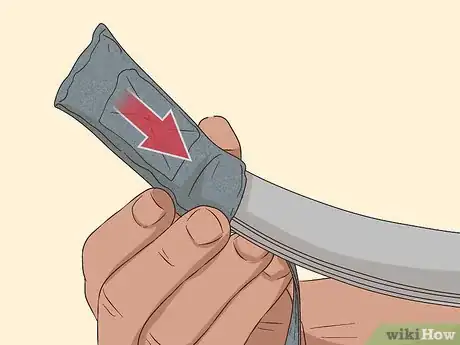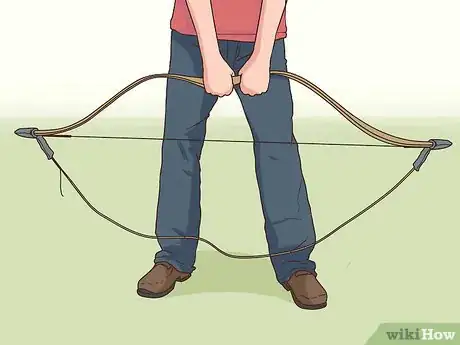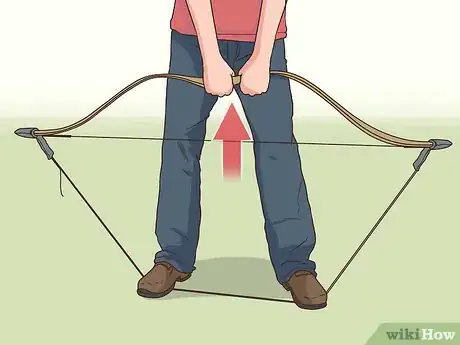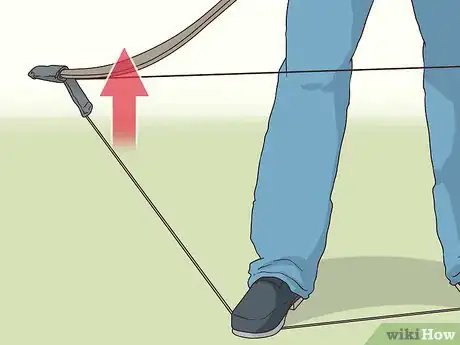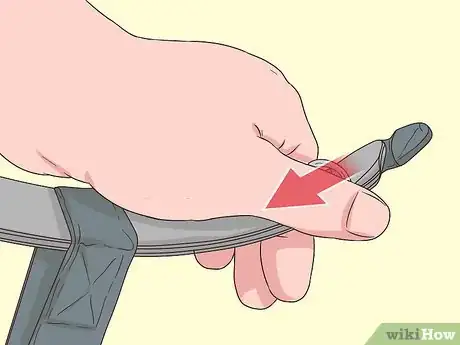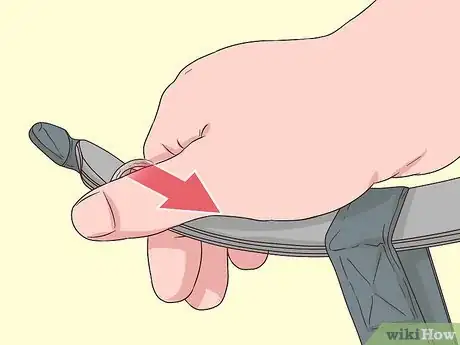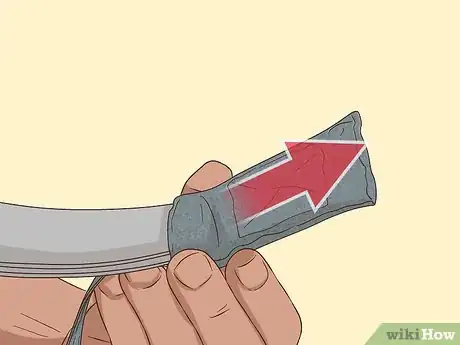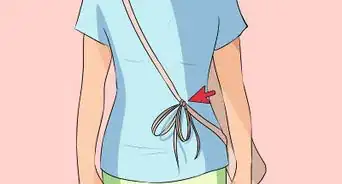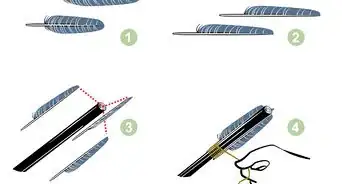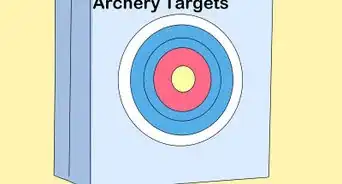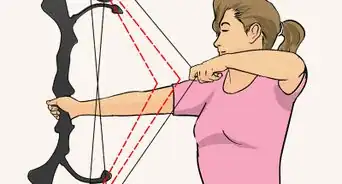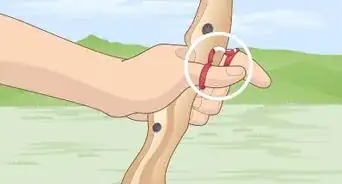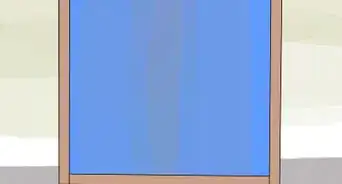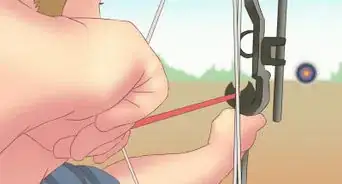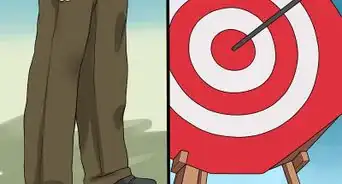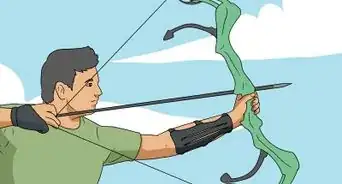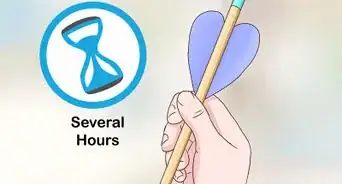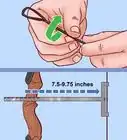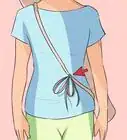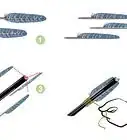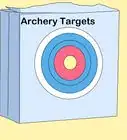X
wikiHow is a “wiki,” similar to Wikipedia, which means that many of our articles are co-written by multiple authors. To create this article, 15 people, some anonymous, worked to edit and improve it over time.
This article has been viewed 32,207 times.
Learn more...
Recurve bows are under constant strain when strung, storing energy that an archer can release for a more powerful shot. This tension makes them dangerous to handle during stringing and unstringing, as a loose limb can shoot out with enough force to snap the bow. Fortunately, a cheap bow stringer makes unstringing much safer and easier, as long as you don't try to rush the job.
Steps
-
1Purchase a bow stringer. These cheap devices are simply a length of cord with a leather pockets at each end, or with one pocket and one pad or "saddle." Using a bow stringer is by far the safest way to string and unstring your bow. Find a bow stringer designed for recurve bows, not longbows, at an archery shop or some sporting goods stores.
- Trying to unstring your bow by hand comes with a high chance of injuring yourself when a bow limb slips and catapults toward you at high speed. Even experienced archers can break their bows when unstringing by hand, or warp the limbs over time.
-
2Place the large pocket over the lower limb. Double pocket stringers have one pocket that's noticeably larger than the other. Place this one over the lower limb of the bow, making sure it fits snugly. (If you are using a pocket-and-saddle stringer, place the pocket on this end.)
-
3Place the small pocket or saddle over the upper limb. If using a double pocket stringer, pull the smaller pocket over the upper limb tip. For a pocket-and-saddle stringer, loop the saddle end over the upper limb, then place the saddle (pad) against the curved portion of the limb, just below the string nock.
- Some bow stringers require you to hold the saddle in place with your hand for the rest of the process.
-
4Hold the bow horizontally. Hold the bow with your dominant hand near the upper limb tip, and your other hand on the central handle. Position it to the string side is closest to the ground, and parallel to it.
-
5Stand on the stringer cord with both feet. Lower the bow until the stringer cord (not the bowstring) rests against the ground. Step on it with both feet, about shoulder width apart. Make sure your feet are stable and the stringer cord is secure beneath them.[Image:Unstring a recurve bow 3.jpg|center]]
-
6Lift the bow until the string is slack. Gradually pull upward on the bow from the handle. The bowstring should become slack as the stringer takes up the tension.
-
7Unhook the bowstring from the upper end. Lift the slack bowstring out of the upper nock. To prevent it dragging on the ground, leave it hanging slack on the upper limb.
-
8Remove the string from the lower limb. Unhook the string from the lower limb nock as well.
-
9Lower the bow slowly. Gradually lower the bow. The stringer cord should become slack, and the limbs should remain in a relaxed position.
-
10Remove the string and stringer. Wrap up the bowstring and store it in a container to preserve its twists. Remove the bow stringer as well.
Warnings
- If you don't unstring your bow correctly, you can cause serious damage to your string or bow.⧼thumbs_response⧽
